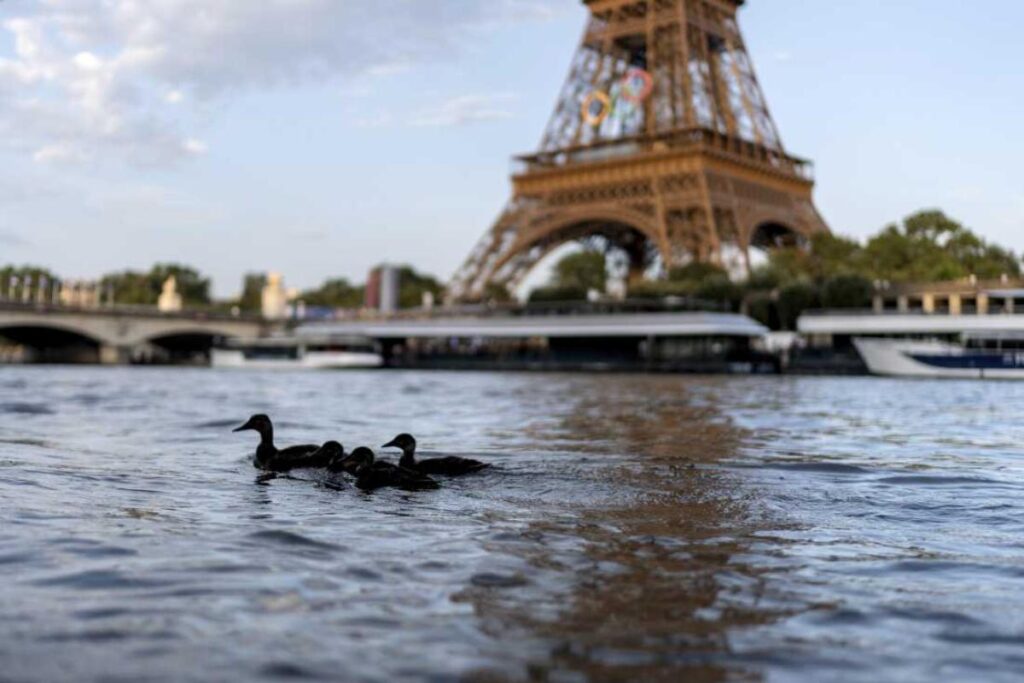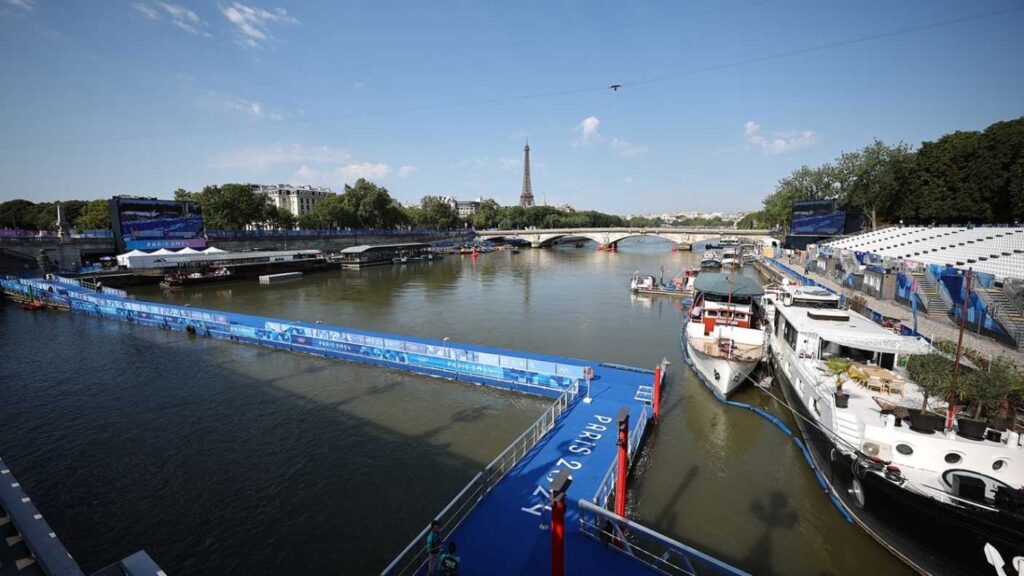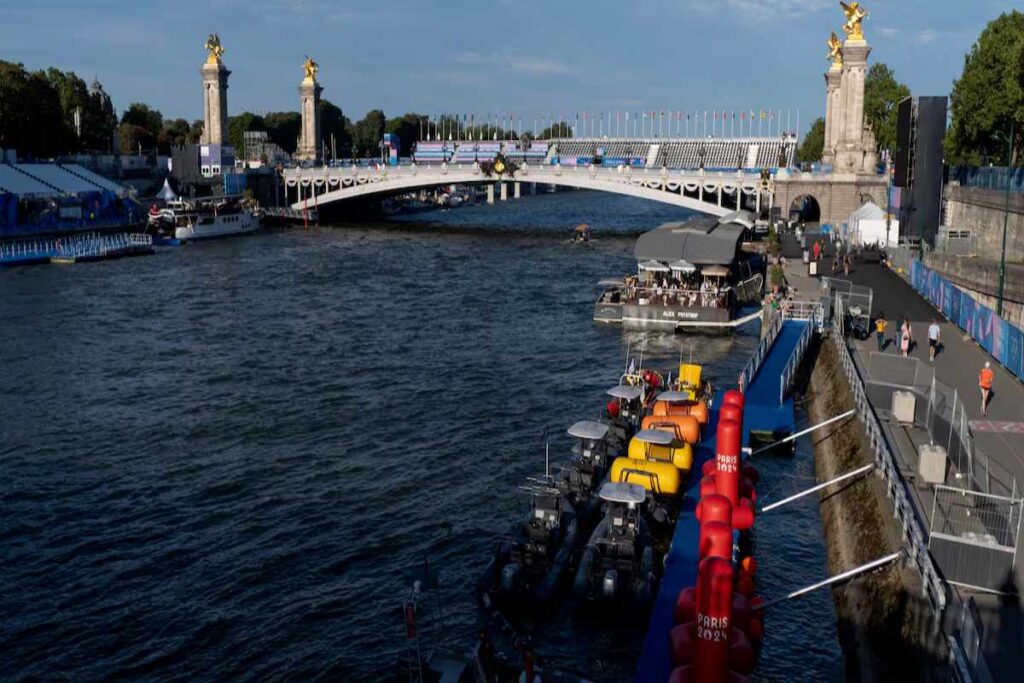Due to the River Seine pollution, the men’s triathlon at the Paris 2024 Olympic Games has been rescheduled. This update came recently by World Triathlon, the sport’s governing body.
The event, which was to commence on Tuesday, July 30, was moved to Wednesday. This was a collaborative decision made by World Triathlon, its medical team, the International Olympic Committee, and Paris City Officials.
Seine Pollution and Health Concerns Prompt Triathlon Postponement at Paris 2024
According to Paris 2024 and the World Triathlon, athlete health is a top priority. Sadly, recent tests of the Seine’s water quality showed levels that did not guarantee the athletes’ safety, hence the event’s postponement.

Despite some improvement in water quality, certain areas of the swim course still showed readings above acceptable limits. Last weekend, Paris experienced heavy rainfall, which affected the opening ceremony and raised concerns about the river’s water quality. The River Seine water quality is known to deteriorate after heavy rainfall.
ALSO READ: “It’s Still Dangerous,” Prince Harry Says on Why He Won’t Bring Meghan Markle Back to the UK
Consequently, training was canceled for the second consecutive day on Monday, July 29, as water quality tests deemed the Seine unsafe. Despite these signs, organizers were optimistic that Tuesday’s race would proceed as planned.
Triathletes React to Seine Pollution-Induced Postponement
French Triathlon Federation technical director Benjamin Maza informed French media on Tuesday, July 30, that triathletes were upset and disappointed upon learning that their event had been canceled. Well, that’s pretty understandable.
Maza further explained that the athletes were already having their pre-race meal when the announcement came, as the events were rescheduled for 8 a.m. Maze understood the athletes’ emotions, emphasizing that they must move from disappointment and anger to a more positive mindset.
As mentioned, it’s understandable to express natural disappointment, as they have been practicing for that moment for years. But let’s just say environmental factors like water pollution are one of those challenges associated with outdoor sports.
ALSO READ: Biden Says His Decision to Withdraw From the Presidential Race Was “In Defense of Democracy”
Why Does the Seine Pollution Persist Despite Cleanup Efforts?
The plan to host swimming events in the Seine for Paris 2024 raised many eyebrows when first announced. For a century, swimming in the river had been banned. However, in an effort to showcase the host city, organizers devised a plan to clean the Seine for the event.
Notably, various organizations invested roughly $1.5 billion to clean up the river. In fact, Paris officials demonstrated its suitability, with Paris Mayor Anne Hidalgo swimming in the Seine earlier this month to show her confidence.
She promised to install a swimming pool in the river after the Games. In addition to Hidalgo’s demonstration of the river’s suitability, France’s sports minister also took a dip in the Seine. A major infrastructure project aimed at reducing this pollution is the Austerlitz Basin, a rainwater storage facility.
According to Paris 2024, this basin can hold the equivalent of 20 Olympic-sized swimming pools of water. After heavy rains on June 17 and 18, the basin reached 80% capacity, effectively preventing 40,000 cubic meters of wastewater and rainwater from entering the Seine.
While this looks promising, water quality deteriorates rapidly. For instance, after rainfall on June 29, E. coli levels at the Alexandra III Bridge increased to around 2000 CFU/100mL on June 30.
Water Quality of the Seine
Despite the extensive cleanup efforts, constant Seine pollution remains a huge concern. It fails to meet World Triathlon standards for “good” water quality. E. coli levels have consistently been above acceptable limits, posing severe health risks to athletes.

World Triathlon rules show that if E. coli levels exceed 1000 CFU/100mL, the swimming segment of the triathlon must not commence. However, this might not be the case if the organization’s medical committee deems it safe to proceed.
Leading up to the Games, E. coli levels in the Seine have often surpassed the threshold for safe competition, raising alarms about the potential health impacts on athletes. In case you are wondering what the triathlon event looks like, here’s the drill.
The individual triathlon event starts with a 1.5-kilometer swim, followed by a 40-kilometer bike race through iconic landmarks like Le Grand Palais and the Champs-Élysées, and concludes with a 10-kilometer run through the heart of Paris.
You Might Also Like:
Tesla Recalls Over 1.8 Million Vehicles Over Hood Latch Issue
Brittany Mahomes Asks Fellow Moms for Tips on How To Break Son of “Bad Habit”
